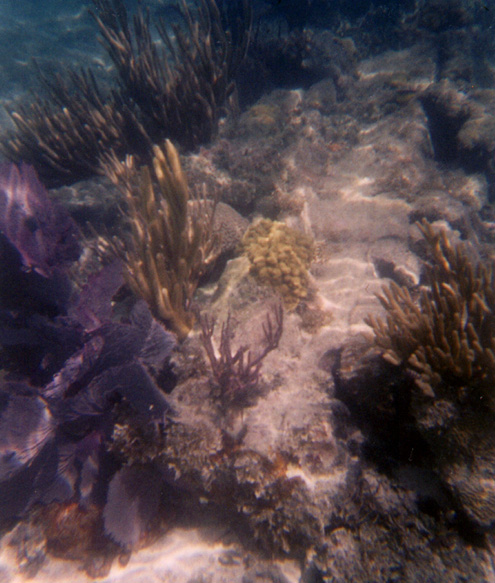

|
| Rising sea temperature in summer seasons are reasons for this "coral bleaching." |
Like tree rings that reveal the age of centuries-old cedar, growth rings in Indian Ocean coral tell how El Niño, the warm-water phenomenon of the tropical Pacific Ocean, influences marine temperatures a continent away.
"We found a record of climate change that reflected the influence of the tropical Pacific (El Niño) on [the Indian Ocean]. This record tells us a story that has broad climate implications," said Julia Cole of the University of Arizona and co-author of a report on coral growth rings. "ENSO (El Niño/Southern Oscillation) has a very long reach. El Niño brings more rain to East Africa just as it does to Arizona, but it also warms the oceans there."
Reliable records of sea temperatures in the western Indian Ocean date back only a few decades, and scientists have been hard-pressed to decipher the long-term influence of El Niño on these temperatures. Coral rings are filling in the gaps.
"Climate data from this part of the world is limited," said Cole. "But coral can grow for centuries. We know that El Niño affects the inter-annual climate, which is the variability from year to year. El Niño also has a long-term cycle and we found that decadal variations of El Niño drive decadal variability in the Indian Ocean. People have never looked at the decadal variability and attributed it to the Pacific Ocean and El Niño."

|
|
| “Evening Reflections – Nauru” Hadi Zaher. | by |
Studying temperature records together with coral growth rings, the researchers discovered a correlation between El Niño in the tropical Pacific and higher surface temperatures in the Indian Ocean. El Niño, they conclude, has a greater effect than Asian and African monsoons on sea-surface temperatures in the Indian Ocean.
"Our study indicates that in addition to being responsible for some of the year-to-year changes in East African climate, ENSO may also set the pace for slower decadal changes," said Cole.
ENSO refers to oceanic and atmospheric fluctuations that originate in the tropical Pacific and affect climate in various areas across the globe.
"Only when we have a long-term perspective can we say anything at all about long-term variability, especially decadal variability," said Cole.
The study provides clues to the role oceans play in the grand global climate scheme. It will also help forecasters better predict the weather.
"One new piece of information the long-term perspective gives us is that the temperature in the region over the last decade was warmer than during the past two centuries," said Cole. "There are not many records of actual ocean temperatures, so adding ocean measurements to the pool, that's one more piece of information that makes a strong case something unusual is going on."
The unusual occurrence is global warming.
"When there's a long record of climate, like the one from the coral, we can ask the question of whether recent warm conditions are unusual or part of a natural cycle," said Cole. "What we found is just one of many cycles that show warming is not part of the natural cycle.
The scientists didn't directly study the effects of El Niño's warm water on the coral. But they note that when seawater gets unusually warm, coral suffers.
"Many corals die when sea temperature exceeds 31 degrees centigrade (94 degrees Fahrenheit)," said Tim McClanahan of the Wildlife Conservation Society and a member of the research team. "The effects of El Niño have killed many of the corals in the western Indian Ocean, despite being far from the center of the El Niño phenomenon. Our study shows that we can expect more warming and coral mortality in the future, which is making local and national management of reefs difficult."
The researchers studied a resilient, abundant coral off the coast of Kenya with growth rings dating back to 1801. They found this living thermometer, called Porites lutea, about 20 feet underwater near Malindi Marine Park. They drilled a small core through the 12-foot-tall coral and assessed the colony.
Chemical changes in the rings tell the story of sea temperature. When the water is warm, the coral reveals light oxygen. When the water is cold, the coral is saturated with heavy oxygen.
"We cored up and down the Kenya coast, from the Tanzanian border to Malindi," said Cole. "We had the advantage of local ecologists on the project with us, and they helped us find the best sites."
Cole, McClanahan, Robert Dunbar of Stanford University and Nyawira Muthiga of the Kenya Wildlife Service collaborated on the report, which was published in the Jan. 28 issue of Science.
Study links El Niño and climate warming to diarrhea increase
February 3, 2000
El Niño calms Atlantic hurricane season
September 3, 1999